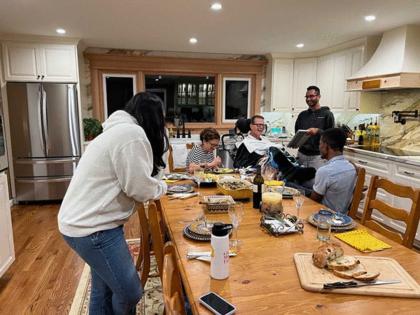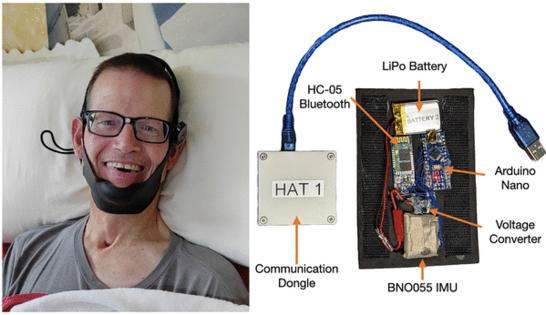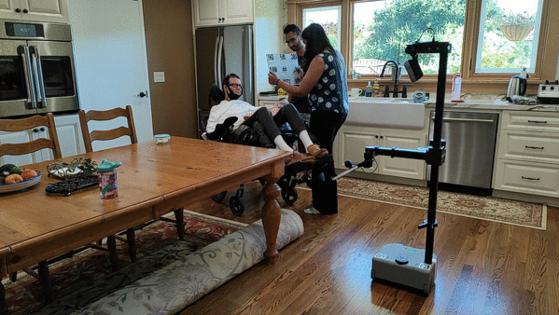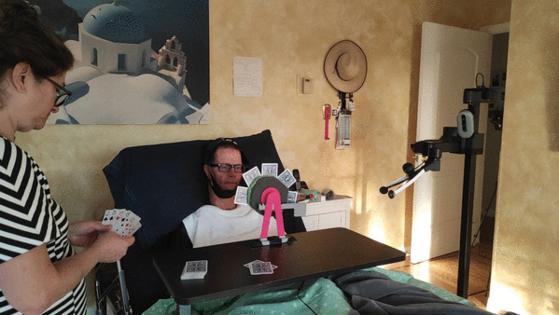Students test their robotic interface, living with a man with quadriplegia
Published in Lifestyles
PITTSBURGH — It started as a theoretical class project to improve the use of robots in a health care setting. It ended in a trip to California for two Carnegie Mellon students, who lived with a man with quadriplegia for a week as they tested and perfected their robotic interface.
Akhil Padmanabha, a third-year robotics Ph.D. student, and Janavi Gupta, a sophomore computer science major, began working on the technology in mid-2022 and early 2023, respectively. The project, called Head-Worn Assisted Teleoperation, or HAT, allows users to control a robot using the tilt of their head or voice recognition, rather than strictly handheld controls.
In California, in the Los Altos Hills home of Henry and Jane Evans, they watched the interface come to life. Evans, who lost the ability to move his limbs and speak after a stroke nearly 20 years ago, used their technology to feed himself, close the blinds and even grab a Red Bull.
They practiced some tasks every day, such as "blanket, tissue, trash" — in which Evans needed to move a blanket, grab a tissue, wipe his face with it, and throw the tissue away. Evans improved his speed on that particular task from taking more than 16 minutes the first day to less than nine minutes at the end of the week.
Other parts of the day were more open-ended. They picked strawberries with Jane Evans in her garden and played poker with Henry, who used the HAT interface to control his cards.
Evans volunteers frequently to assist with research testing new adaptive devices, and regularly invites researchers to stay with him in his home. Padmanabha offered to stay with his parents, who live nearby, but Evans suggested that it would be more effective for the researchers to spend time living with him.
"You hear about the struggles of someone with quadriplegia but until you actually live with them, you don't see all the details," said Padmanabha. "It's very interesting to see that and think about how you can use robotics or technology to address those issues."
Without being there, it would be hard to predict which tasks had the most impact, said Gupta.
"He really enjoyed being able to scratch his itches," she said. "I didn't realize that was so important — it feels like such a small thing."
Evans has some movement in his fingers, and was able to use the interface robot partially with his head movement and partially with his hand and a computer mouse.
...continued
©2024 PG Publishing Co. Visit at post-gazette.com. Distributed by Tribune Content Agency, LLC.














Comments